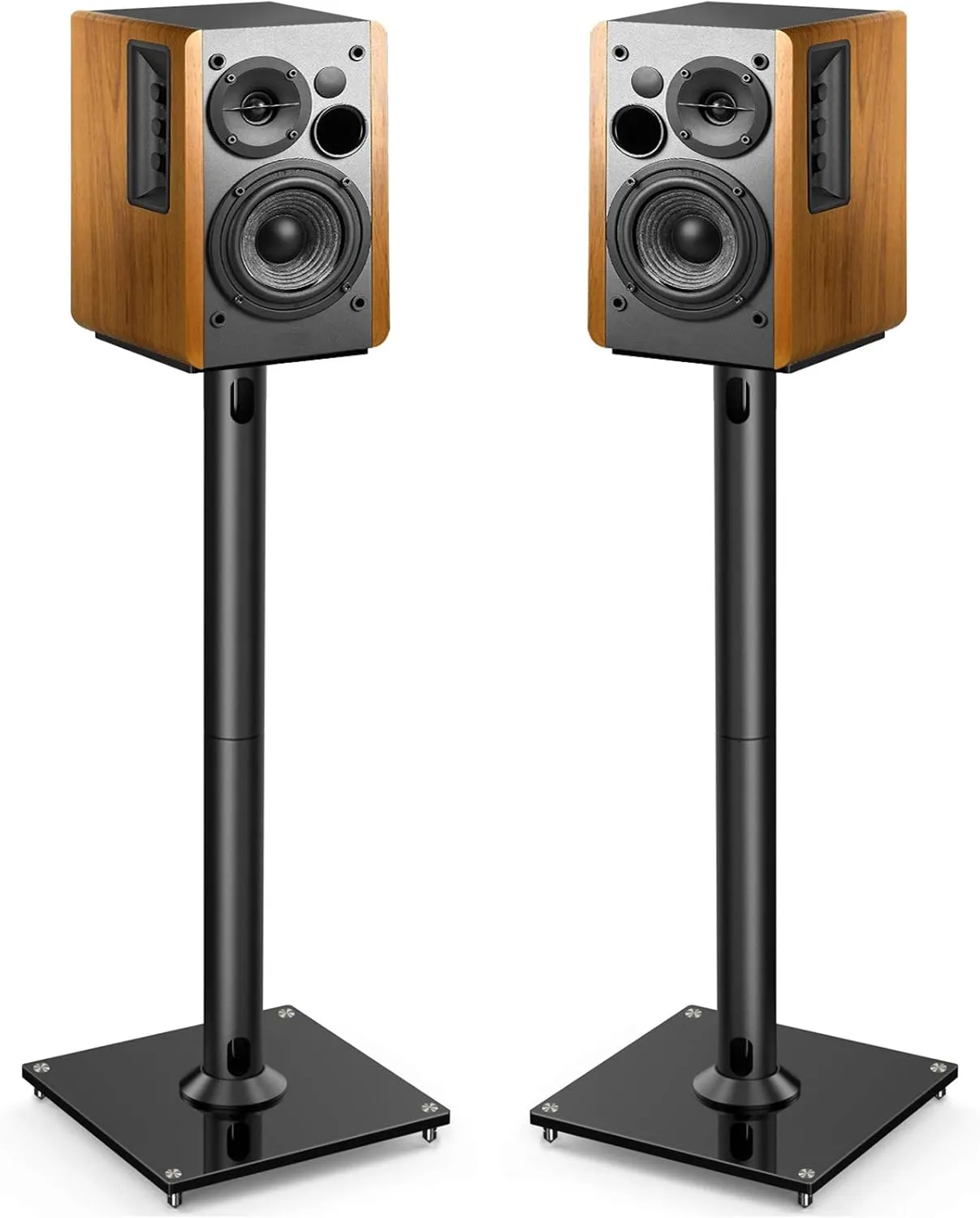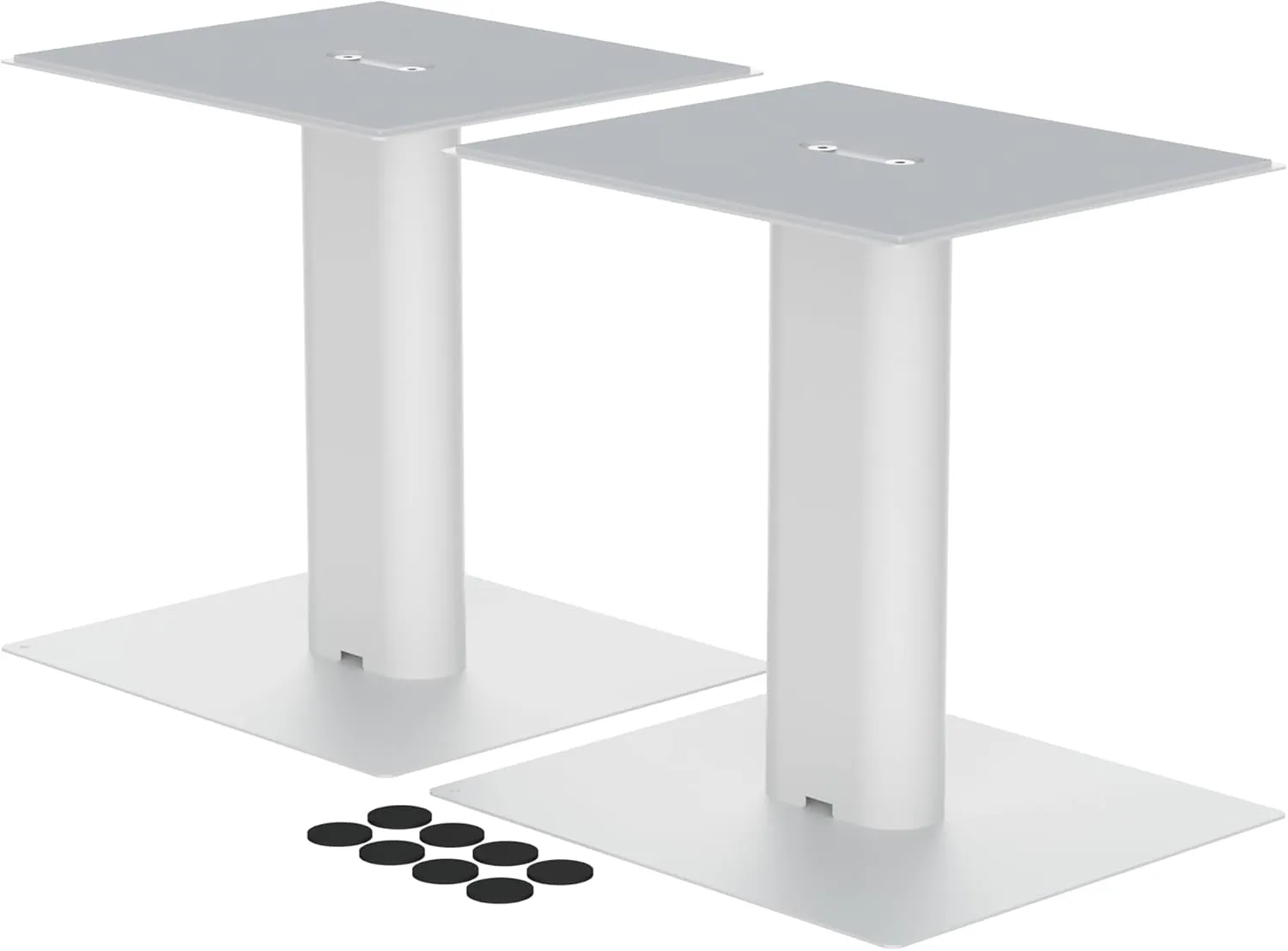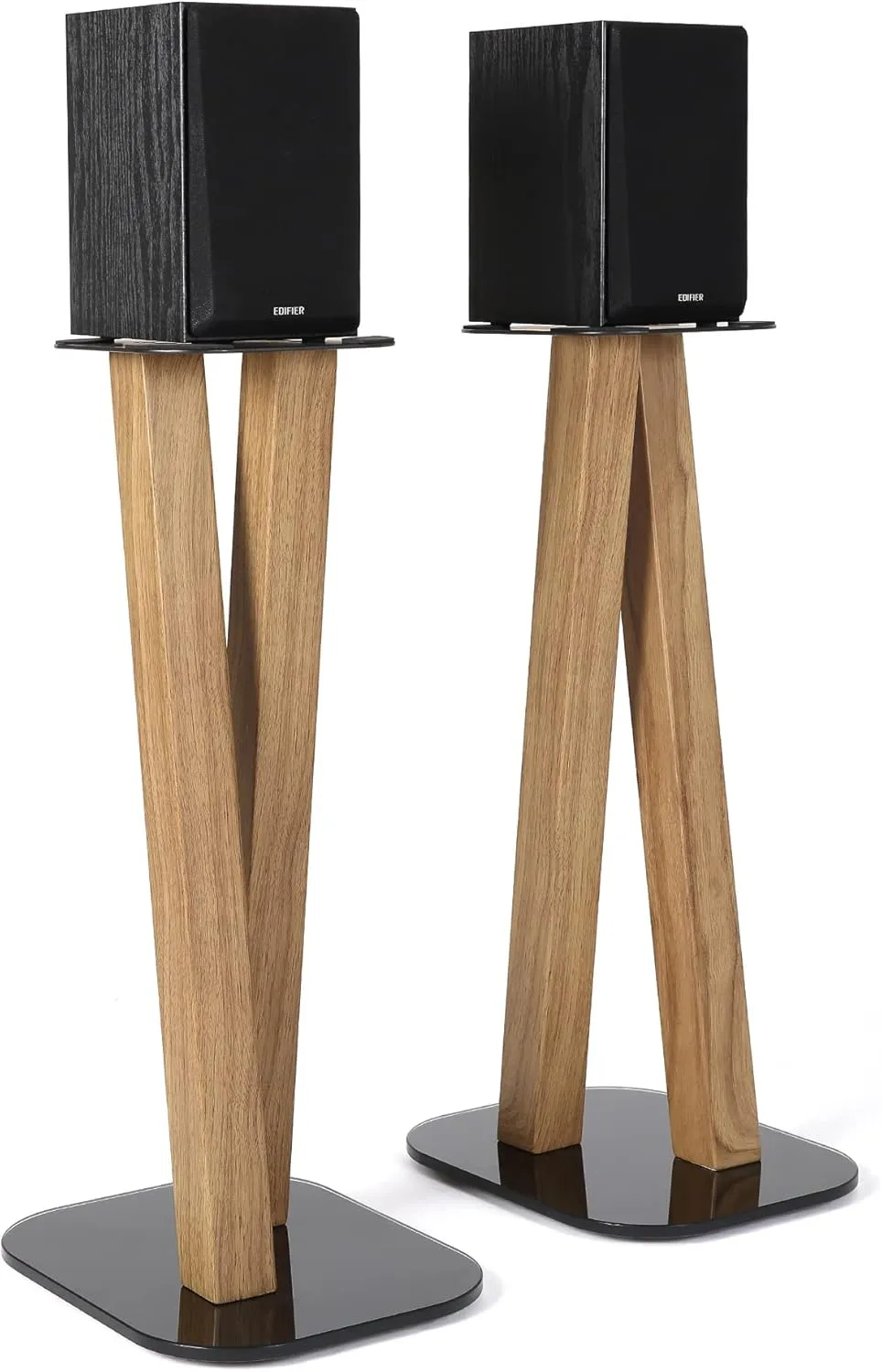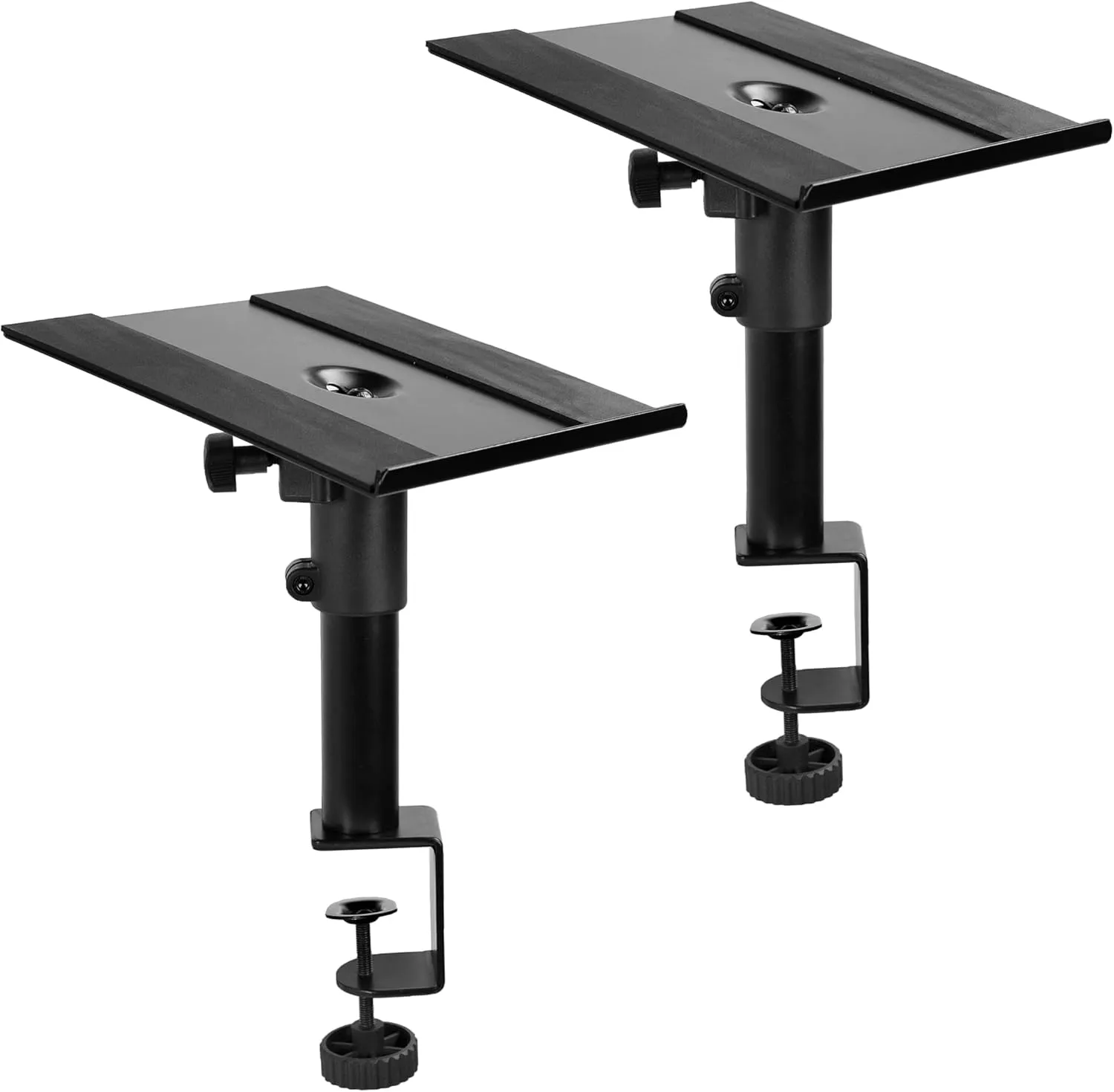How to Choose the Best Speaker Stands for Your Home or Studio

If you have just got a brand new speakers, but thinking of that vibe that you want from these! The fact you need to know is that it does not only about the purchase of a speakers.
Sometimes you get speakers, to which sound powerful, yet it lacked clarity and depth, especially during streaming.
Many people think of buying a powerful pair of speakers is all it takes to get that rich, immersive audio experience. But in reality, sound quality depends on much more than just the speakers themselves.
You might notice that while your new speakers sound loud and dynamic, something still feels off, maybe the audio lacks clarity, depth, or spatial balance, especially during music streaming or movie playback.
For this, speaker positioning plays a huge role in how your setup actually sounds. And one of the most effective yet often overlooked ways to improve that positioning is by using speaker stands.
In this guide, I’ll walk you through 10 essential factors to consider when choosing speaker stands, so you can unlock the full potential of your sound system.
What are Speaker Stands?
Speaker stands are specialized supports designed to hold and elevate speakers at an optimal height and position for improved sound performance.
They play a crucial role in enhancing audio quality by aligning the speaker’s tweeters with the listener’s ear level, which reduces vibrations, and prevents sound distortion caused by placing speakers on unsuitable surfaces like tables or shelves. Many stands feature stability-enhancing designs, acoustic isolation elements, and cable management systems to keep setups neat and professional.
Whether in a home theater, music studio, or living room, speaker stands ensure that speakers deliver clear, balanced, and immersive sound.
How to Choose the Best Speaker Stands for Your Home or Studio?
1. Height of the Stands
- Problem: Your speakers may not be at ear level
The height of your speaker stands plays a critical role in sound delivery. The goal of good speaker placement is to align the tweeters with your ears while you are seated.
If your stands are too tall or too short, you will lose the balance of sound frequencies. Proper height ensures that you hear every detail the speaker was designed to produce. It is important specifically in the case of smart speakers.
How to Choose the Right Height?
- Measure the height from your seated ear level to the floor.
- Then measure the height of your speaker from base to tweeter.
- Subtract the speaker height from ear height, the result is your ideal speaker stand height.
Example: If your ear level when seated is 38 inches from the floor, and your speaker’s tweeter sits 8 inches from the bottom, your ideal stand height is around 30 inches.
2. Weight Capacity
- Problem: Lightweight stands can’t support large or heavy speakers.
The second factor to think about is whether the stands can actually support your speakers. Placing heavy speakers on lightweight or unstable stands is a recipe for disaster.
Not only does it affect safety, but it also impacts sound quality by creating vibrations or instability.
How to Match Stands with Speakers?
- Look at your speaker’s weight in the product manual or website.
- Choose stands that support at least 20-30% more weight than your speakers.
If your speaker weighs 15 lbs, go for stands rated for 20-25 lbs to ensure long-term stability.
3. Build Material
- What to Look: How it affects sound and durability
The material of the speaker stands influences both durability and sound performance. They are commonly made of steel, aluminum, wood, or MDF.
Steel and aluminum provide strength and reduce vibration, which makes them great for studios and high end tower speakers. Wood or MDF often blend better with home interiors but may need additional stability features.
Why Material Choice Matters?
A stand that resonates or flexes can distort your sound. Heavier materials tend to absorb vibrations better, and provide a cleaner listening experience.
4. Stability and Base Design
- Issue: Unstable stands = shaky sound and serious safety risk
No one wants their expensive speakers tipping over. Stable stands reduce vibrations and protect your equipment. They also ensure consistent sound quality. Wobbly stands can cause distortion and are unsafe in households with kids or pets.
Features That Improve Stability
- Wide base for better center of gravity.
- Adjustable spikes for carpeted floors – they dig into the carpet to prevent wobbling.
- Rubber feet or pads for hard floors – to avoid scratching or sliding.
Some stands also offer fillable columns for sand or lead shot, which drastically improves mass and stability.
5. Cable Management
- Problem: Tangled wires ruin aesthetics and cause hazards
Messy speaker wires can ruin the clean look of a setup as they are not only unattractive but also dangerous. Proper cable routing through the stands keeps your space organized and professional. And when it comes to outdoor speakers, managing the cables becomes more necessary to avoid any emergency situation.
Features to Look For
- Hollow stand columns: These allow you to feed cables through the middle, hiding them entirely.
- Built-in clips or channels: Found on the back or side of some stands for routing cables neatly.
- Rear cut-outs: Helpful if stands are positioned close to a wall.
6. Acoustic Isolation
- Problem: Vibrations muddy your sound
This point often separates average stands from excellent ones. When speakers vibrate directly against the floor, unwanted noise and resonance can interfere with clarity. Isolation helps speakers perform at their best.
How to Achieve Isolation?
Look for stands with rubber feet, foam pads, or decoupling designs. These reduce the transfer of vibrations, and give you cleaner sound reproduction.
7. Adjustability and Flexibility
- Problem: Fixed stands limit your options
Sometimes, one fixed setup does not fit every situation. If you move your bookshelf speakers often or use them in different rooms, stands with adjustable height or tilt options can make your life easier. Flexibility is key.
Features That Add Flexibility
- Adjustable height: Allows you to change speaker elevation depending on room or seating arrangement.
- Swivel and tilt features: Lets you angle the speakers directly toward the listener, especially important for mixing or focused listening.
- Interchangeable feet: Spikes for carpets, rubber pads for hard floors.
8. Room Size and Placement
- Problem: One-size-fits-all doesn’t work for acoustics
The right stands for a studio may not work well in a small apartment. Large rooms need taller and sturdier stands to project sound evenly. Small rooms may require compact stands that don’t overwhelm the space.
Placement Considerations
Think about whether your stands will go near walls, in corners, or in open spaces. Placement affects acoustics, and the right stand design can help optimize it.
9. Design and Aesthetics
- Problem: A great sound setup can still clash with your decor
Functionality matters most, but design has its place too. If you are setting up speakers in your living room, you want stands that match your decor. In a studio, sleek professional designs may look more appropriate.
What to choose:
- Matte black or silver metal: Modern, neutral, and minimal
- Wood or MDF finishes: Ideal for cozy, homey environments
- Matching speaker-brand stands: Some brands make stands that match the look and dimensions of their speakers
10. Price and Value for Money
- Problem: Going too cheap (or too premium) without understanding what you’re paying for
Finally, your budget will shape your decision. Speaker stands range from affordable to premium. Spending more usually brings better build quality, but that does not mean you should overspend.
Compare features against cost. Ask yourself if the extra money gets you something meaningful like better stability or adjustability.
Value for money is about balancing performance with affordability. And if you want these stands for your multi channel home theater system, it would be worth spending on them.
As a rule of thumb: If you spent $300-800 on your speakers, a $50-100 investment in speaker stands is well worth it.
5 Best Speaker Stands To Choose From
| Image | Product | Features | Price |
 | PrPERLESMITH Floor Standsoduct | $59.99 | |
 | Suptek Desktop Stands | $34.99 | |
 | EXIMUS Universal Stands | $149.00 | |
 | VIVO Clamp-on Stands | $49.00 |
Final Thoughts
Choosing the best speaker stands for your home or studio is not just about picking the first pair you see. From height and stability to aesthetics and budget, every factor plays a role in how your speakers sound and how your space looks.
When you consider these ten points, you ensure that your investment in speakers pays off with the best possible performance. Remember, great sound is not just about the equipment but also about how you use it, and the right speaker stands bring out the very best in your system.
People Also Ask
Do speaker stands make a difference?
Yes, speaker stands improve sound clarity, reduce vibrations, and optimize speaker placement for better audio quality.
How tall should speaker stands be?
Speaker stands should position the tweeters at the same level as your ears when seated.
Why use speaker stands?
Speaker stands enhance sound performance, provide stability, and create proper listening angles.
Where to buy speaker stands and mounts?
You can buy speaker stands and mounts from audio equipment stores, electronics retailers, or trusted online platforms like Amazon.




